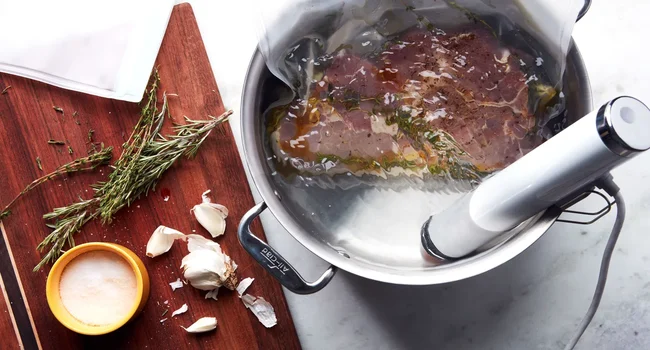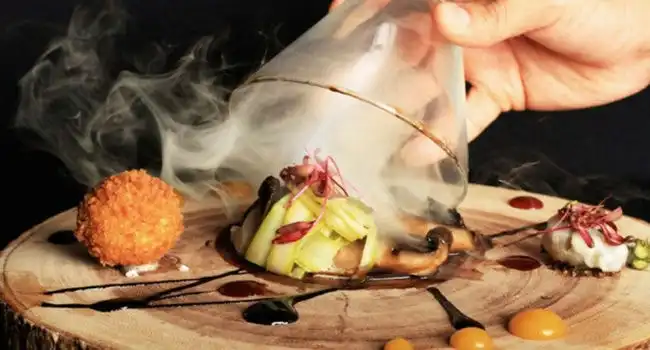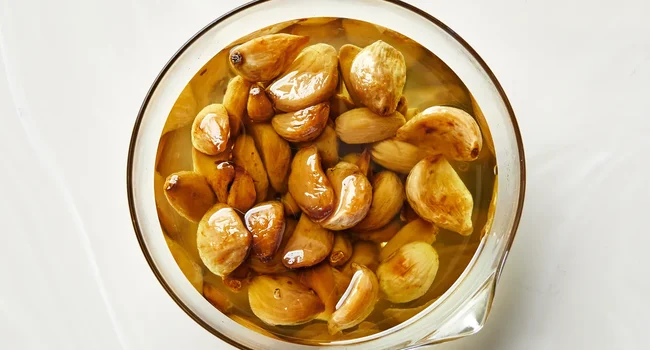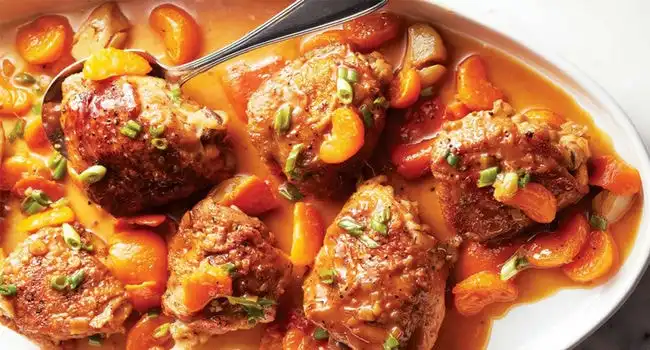Cooking is more than just preparing food; it’s an ever-evolving art form shaped by innovation, tradition, and the ceaseless pursuit of flavor. Over the centuries, chefs have refined and redefined techniques, merging science with passion to tantalize our palates and expand our culinary horizons. Each breakthrough, whether borne from necessity or creativity, has left an indelible mark on how we experience and enjoy our meals. Join us as we delve into the ten cooking techniques that have truly revolutionized the culinary world, each one transforming the kitchen into a playground of discovery and delight.
10- Sous-vide Cooking

Photo Credit: epicurious
Sous-vide, meaning “under vacuum” in French, revolutionized precision cooking. Ingredients, typically sealed in a plastic pouch, are immersed in water and cooked at precise temperatures. This ensures even, perfect doneness without overcooking any part. Furthermore, it preserves the integrity of ingredients, locking in flavors and juices. Chefs around the world adopted this technique for its reliability and accuracy. Restaurants could now ensure consistency across dishes, enhancing their reputation. The controlled temperature prevents cell walls from bursting, and retaining moisture. This results in unparalleled texture and flavor. While the equipment was once exclusive to high-end restaurants, home cooks now embrace sous-vide. The rise of affordable precision cookers brought this revolutionary method to many kitchens. Ultimately, sous-vide stands as a testament to the blend of culinary art and science.
9- Molecular Gastronomy

Photo Credit: Peaklife
When science met cooking, molecular gastronomy was born, challenging traditional cooking paradigms. This technique manipulates physical and chemical processes, producing unique textures and presentations. Spherification, for instance, encapsulates liquids in a delicate gel, creating caviar-like pearls. Furthermore, foams, gels, and airs introduce different mouthfeels, redefining familiar flavors. Some chefs use liquid nitrogen to instantly freeze ingredients, adding drama to dish presentations. Others employ hydrocolloids to alter food textures. The global culinary scene was abuzz with this new approach, leading to avant-garde dishes. Molecular gastronomy provided chefs a new toolkit, pushing the boundaries of what’s possible in the kitchen. While it has its critics, its impact on modern cuisine is undeniable, forever changing our dining experience.
8- Fermentation

Photo Credit: Yogurt Nutrition
While ancient, fermentation reshaped the way we view food preservation and flavor development. By encouraging the growth of beneficial bacteria, yeast, or fungi, foods undergo a transformative process. This not only extends their shelf life but also develops unique tastes and textures. Furthermore, fermented foods like kimchi, yogurt, and sourdough bread offer probiotic benefits. Chefs worldwide use fermentation to introduce complexity and tanginess to dishes. The breakdown of sugars during fermentation produces acids, enhancing the food’s profile. Traditional dishes from various cultures, such as miso and sauerkraut, highlight fermentation’s global influence. Beyond taste, the technique has significant health implications, promoting gut health. As chefs continue to experiment, fermentation’s potential seems limitless, solidifying its revolutionary status in culinary history.
7- Smoking

Smoking, a technique that infuses food with the flavor of smoldering wood, reshaped our understanding of flavor layering. Both cold and hot smoking methods impart distinctive smoky notes to ingredients. Furthermore, smoking also serves as a preservation method, extending the shelf life of foods, especially meats. Historical societies adopted smoking as a means to store food for leaner times. Over time, chefs began to appreciate the deep, woody flavors introduced by different wood varieties. Hickory, oak, and applewood offer distinct notes, enhancing a dish’s complexity. From smoked salmon to barbecue, smoking’s influence is undeniable. Its application has expanded beyond meats to cheeses, vegetables, and even cocktails. In the modern culinary world, the allure of smoking continues, with chefs pushing boundaries and experimenting further.
6- Maillard Searing

Photo Credit: Lazy L Meats
At the heart of many culinary masterpieces lies searing, a technique that creates a caramelized crust on ingredients. By exposing food to high heat rapidly, it locks in juices and boosts flavors. Furthermore, the Maillard reaction, distinct from caramelization, gives seared foods their characteristic browning. Searing steaks became synonymous with luxury dining, while seared scallops showcased seafood’s delicacy. This foundational technique is pivotal in multiple dishes, setting the stage for further cooking or standing alone. Chefs globally consider a well-seared piece, with its crusty exterior and juicy interior, a mark of expertise. In the culinary universe, searing’s significance as a technique that harnesses flavor through simple physics is unparalleled.
5- Confit

Photo Credit: Bon Appetit
Originally a French technique, confit fundamentally changed food preservation. Chefs submerge ingredients, typically meat, in fat and then cook it slowly at low temperatures. This method not only imparts incredible flavor but also ensures the food’s longevity. Furthermore, the slow cooking in fat tenderizes the meat, giving it a unique texture and taste. Ducks and geese became popular choices for confit. Once cooked, the meat can be stored, covered in the fat, in a cool place. This technique, apart from preservation, deepens flavors, resulting in a rich and aromatic dish. Historically, this method provided a solution to the lack of refrigeration. Today, chefs appreciate confit for the depth of flavor it imparts. Its influence spread beyond France, inspiring global cuisines. The luxurious mouthfeel and the succulent texture of confit dishes make them enduring classics.
4- Poaching

Photo Credit: Bon Appetit
Gentle and subtle, poaching refined the way we cook delicate ingredients, especially fish and eggs. Immersing ingredients in a barely simmering liquid, often infused with herbs and spices, ensures even cooking. Furthermore, this method retains the ingredient’s structural integrity, preventing it from falling apart. Poached pears in red wine became a classic dessert, showcasing the technique’s versatility. Similarly, eggs Benedict wouldn’t exist without perfectly poached eggs. By keeping temperatures low, poaching extracts flavors without overwhelming the primary ingredient. Many professional kitchens consider it an essential technique, especially for dishes that require a delicate touch. As culinary arts evolved, poaching’s significance grew, highlighting the balance between simplicity and mastery.
3- Braising

Photo Credit: Chatelaine
Braising, a combination of dry and wet cooking, transformed tough cuts of meat into melt-in-the-mouth delicacies. First, ingredients are seared at high temperatures, locking in flavors. Then, they’re simmered slowly in a liquid, often broth or wine. Furthermore, this method breaks down connective tissues, ensuring tender results. Root vegetables often accompany meats, absorbing the rich flavors. Many cultures have iconic braised dishes, from French coq au vin to Chinese red-cooked pork. The long cooking process melds flavors harmoniously, producing deep and robust tastes. Its simplicity belies the complexity of flavors achieved. For many chefs, braising remains a beloved technique, particularly for heartwarming, comforting dishes. Its widespread global influence attests to its transformative power in the culinary realm.
2- Baking

Baking, the act of cooking by enveloping food in dry heat, revolutionized food preparation and consumption. Ovens, once clay structures, have evolved, but the principles remain. Furthermore, baking transformed grains into bread, a staple across cultures. Pastries, cakes, and pies became celebratory symbols, marking occasions and traditions. The science of baking, especially in bread-making, requires precision and understanding. Yeast fermentation, gluten development, and moisture content all play crucial roles. Baking is both an art and a science. Its transformative power is evident in the vast array of baked goods, from croissants to pizzas. As a cornerstone of culinary techniques, baking’s influence on our dietary habits and cultural rituals is immeasurable.
1- Grilling

Photo Credit: Food Network
One of the most primal cooking techniques, grilling imparts a charred flavor, elevating basic ingredients. Exposing food directly to an open flame or heated surface caramelizes the exterior. Furthermore, the Maillard reaction, responsible for browning, enhances taste profiles. From backyard barbecues to upscale steakhouses, grilling’s influence is far-reaching. Different cultures have their versions of grilled specialties: American burgers, Argentinian asado, and Japanese yakitori, to name a few. The smoky aroma and the distinct grill marks became synonymous with summer and outdoor gatherings. While it’s one of the oldest cooking methods, its impact on global cuisines remains profound. Grilling bridges the gap between ancient traditions and contemporary culinary practices.
And there you have it, a journey through time and taste, exploring the techniques that have sculpted the culinary landscape. Each method, in its own unique way, captures the essence of cooking: a dance of science, art, and passion.


